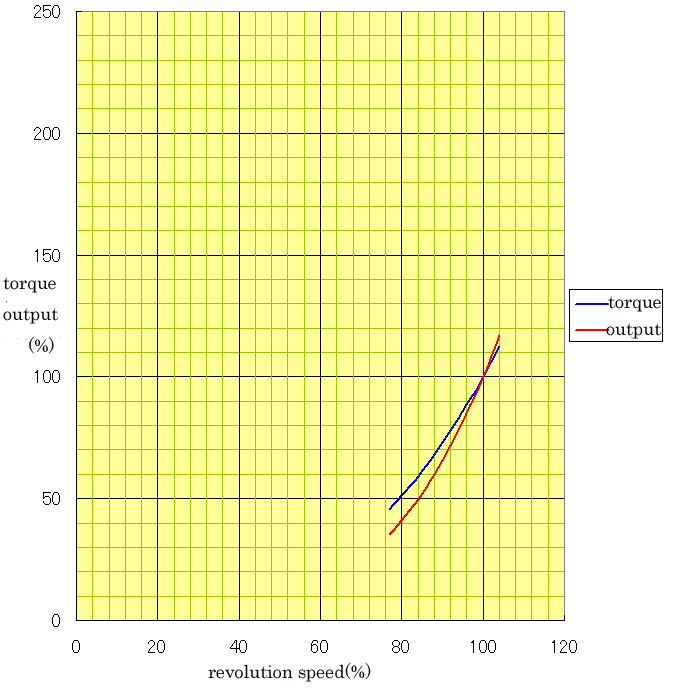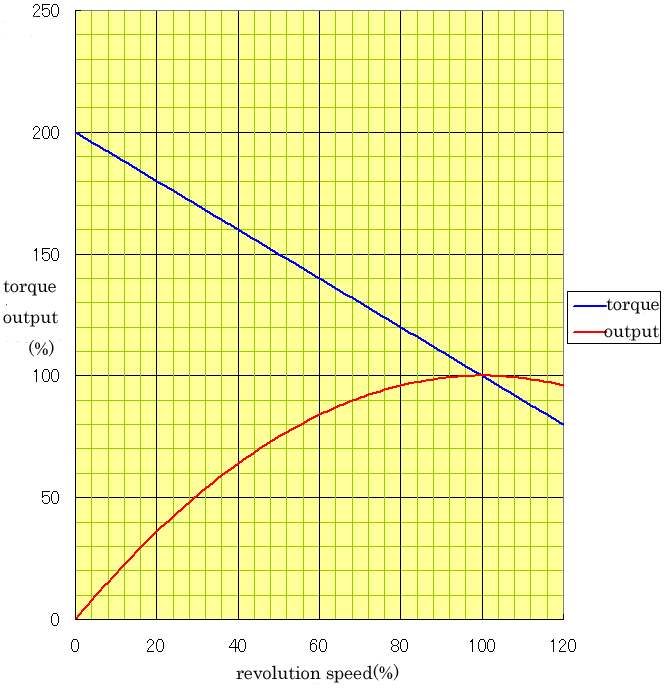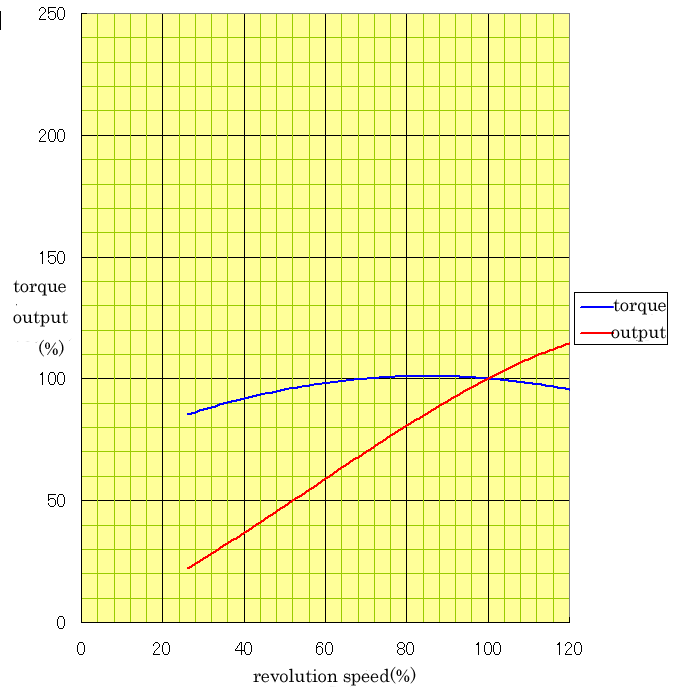|
|
Torque speed characteristics |
|
This section will illustrate the torque-speed feature of a gas turbine. As is described in the previous chapter, the toque speed characteristics of a single shaft gas turbine is quite different from that of two shaft or three shaft gas turbine. Single shaft gas turbine The next schema shows the relationship between torque
and speed of a single shaft gas turbine. In
this schema, the blue colored line shows a speed torque
curve, the relation between rotational speed and torque of a
single shaft gas
turbine. The actual engine has somewhat more torque at low speed, but
approximate to a line. The red colored curve shows the relation between
the engine speed and output. The torque is very different from that of a two shaft engine and it seems very inappropriate to drive vehicles.
A single shaft gas turbine is simple and as its output shaft is coupled to a high speed rotating compressor, it has a large inertia of rotation, leading to a good stability in speed of revolution. This is very effective in the power generation where constant speed is important to maintain the frequency. Two shaft gas turbineThe next schema is speed torque curve of a two shaft gas turbine. The actual engine has somewhat more torque at the low speed range, but approximate to a line. At (100,100) point, the engine delivers the best performance. This graph indicates that when the engine speed reduces to 60%, the engine torque increases to 140% and when the engine speed reduces to 40%, the engine torque increases to 160%. If you are a car nut and interested in the car technology, you will be eager for this kind of engine.
Since an engine output is a product of a torque
and speed, the output of this type is comparably maintained at a low speed. At
40% engine speed, 60% output is maintained..
These engines require mechanical or electrical torque converters to overcome this defect. As is mentioned above, two shaft gas turbines have a feature of built-in torque converter and even single stage direct drive mechanical transmission can be available. In Japanese national railways, Kiha 391 turbine powered prototype was produced and equipped with no torque converter and in other counties some turbine powered locomotives had no torque converter or electric transmission. Defect of the two shaft gas turbine is that the increase of its component and weight. |


